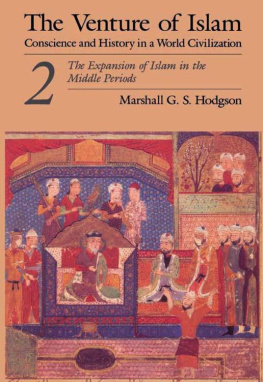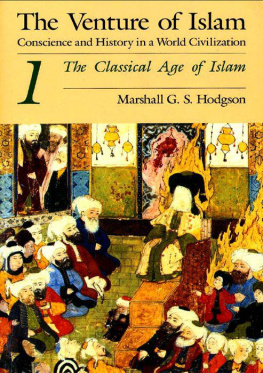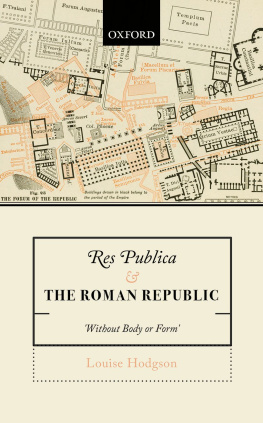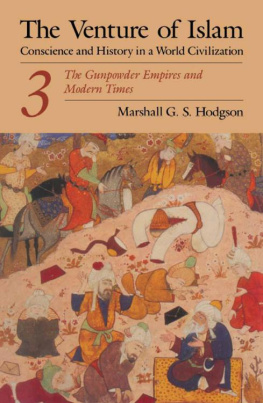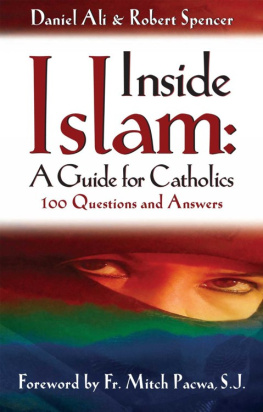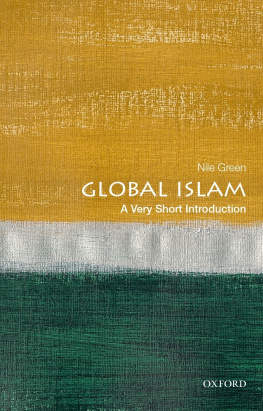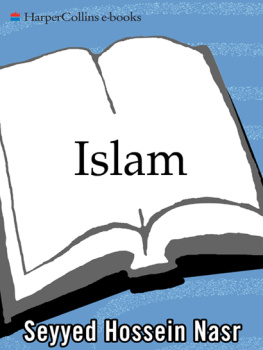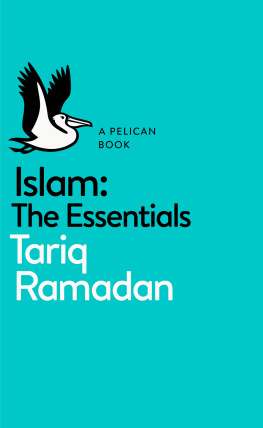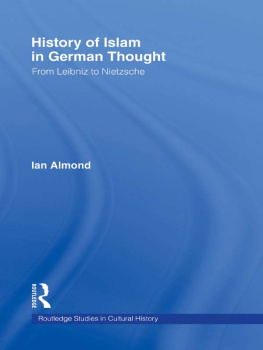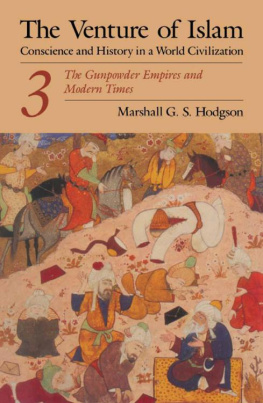Hodgson - The Venture of Islam, Volume 2: The Expansion of Islam in the Middle Periods
Here you can read online Hodgson - The Venture of Islam, Volume 2: The Expansion of Islam in the Middle Periods full text of the book (entire story) in english for free. Download pdf and epub, get meaning, cover and reviews about this ebook. year: 2009, publisher: University of Chicago Press, genre: Religion. Description of the work, (preface) as well as reviews are available. Best literature library LitArk.com created for fans of good reading and offers a wide selection of genres:
Romance novel
Science fiction
Adventure
Detective
Science
History
Home and family
Prose
Art
Politics
Computer
Non-fiction
Religion
Business
Children
Humor
Choose a favorite category and find really read worthwhile books. Enjoy immersion in the world of imagination, feel the emotions of the characters or learn something new for yourself, make an fascinating discovery.
- Book:The Venture of Islam, Volume 2: The Expansion of Islam in the Middle Periods
- Author:
- Publisher:University of Chicago Press
- Genre:
- Year:2009
- Rating:5 / 5
- Favourites:Add to favourites
- Your mark:
- 100
- 1
- 2
- 3
- 4
- 5
The Venture of Islam, Volume 2: The Expansion of Islam in the Middle Periods: summary, description and annotation
We offer to read an annotation, description, summary or preface (depends on what the author of the book "The Venture of Islam, Volume 2: The Expansion of Islam in the Middle Periods" wrote himself). If you haven't found the necessary information about the book — write in the comments, we will try to find it.
The Venture of Islam, Volume 2: The Expansion of Islam in the Middle Periods — read online for free the complete book (whole text) full work
Below is the text of the book, divided by pages. System saving the place of the last page read, allows you to conveniently read the book "The Venture of Islam, Volume 2: The Expansion of Islam in the Middle Periods" online for free, without having to search again every time where you left off. Put a bookmark, and you can go to the page where you finished reading at any time.
Font size:
Interval:
Bookmark:
Conscience and History in a World Civilization
MARSHALL G. S. HODGSON
VOLUME TWO
THE EXPANSION OF ISLAM
IN THE MIDDLE PERIODS
THE UNIVERSITY OF CHICAGO PRESS
CHICAGO AND LONDON
Some of the material in these volumes has been issued in a different form in Introduction to Islamic Civilization (volumes 1, 2, 3, Copyright 1958, 1959 by The University of Chicago), in A History of Islamic Civilization (Copyright 1958 by Marshall G. S. Hodgson), and in an earlier version of The Venture of Islam (volumes 1, 2, Copyright 1961 by Marshall G. S. Hodgson).
The University of Chicago Press, Chicago 60637
The University of Chicago Press, Ltd., London
1974 by The University of Chicago
All rights reserved. Published 1974
Paperback edition 1977
Printed in the United States of America
ISBN: Vol. 1: 0-226-34683-8 (paper);
Vol. 2: 0-226-34684-6 (paper);
Vol. 3: 0-226-34681-1 (cloth); 0-226-34685-4 (paper)
978-0-226-34687-8 (electronic)
LCN: 73-87243
13 12 11 10 09 08 07 06 05 04 10 11 12 13 14

VOLUME II
VOLUME II
BOOK THREE
BOOK FOUR
VOLUME II
The Establishment of an International Civilization
All truth is a shadow except the last, except the utmost; yet every truth is true in its own kind. It is substance in its own place, though it be but shadow in another place.
Isaac Pennington
The Middle Periods of Islamicate history
After 945 CE, the most characteristic traits of the classical Abbs world, with its magnificent caliphal empire and its Arabic-language culture, were gradually altered so greatly that we must set off a major new era. The world of al-Manur, of Hrn al-Rashd, of al-Mamn, still readily discernible in its outlines in the time of al-Muqtadir (908932), was scarcely recognizable five or six generations later. Baghdad gradually became a provincial town and the very name of the caliphate eventually disappeared. During the five centuries after 945, the former society of the caliphate was replaced by a constantly expanding, linguistically and culturally international society ruled by numerous independent governments. This society was not held together by a single political order or a single language of culture. Yet it did remain, consciously and effectively, a single historical whole. In its time, this international Islamicate society was certainly the most widely spread and influential society on the globe. (We shall refer to the period before about 1250 as the Earlier Middle Period; to the period from then to about 1500 as the Later Middle Period.)
So far as there has been any common image of Islamicate culture, it has tended to be that of the Middle Periodsthe periods after the pre-Islamic traditions in the Nile-to-Oxus region had died out (with the decline of the dhimm population to markedly minority status), but before the Oikoumenic context (in terms of which the Islamicate culture was formed) began to be disrupted by the basic social transformation of one of its regions, the Occident. Taken narrowly, this means the time between the mid-tenth century at the collapse of the classical caliphate, under whose auspices the culture had been taking form, and the end of the fifteenth century, when a new world geographical balance gave its first intimations with the opening up of the wider oceans by Occidentals. The period of the High Caliphate tends to be seen through the image formed of it in the Middle Periods; those elements of its culture are regarded as normative that were warranted sound by later writers. More important, the problems that we have seen as distinctive of the Islamicate culture as suchthe problems of political legitimation, of aesthetic creativity, of transcendence and immanence in religious understanding, of the social role of natural science and philosophythese become fully focused only in the Middle Periods.
This way of seeing Islamicate culture is partly legitimate. To the end of the High Caliphal Period, the Islamicate culture was still in process of formation; it was still winning the population to Islam and transforming the Irano-Semitic traditions into the new form which only after 945 was ready to be carried through large parts of the hemisphere. And by the sixteenth century, quite apart from the first glimmerings of the Occidental transformation yet to come, new tendencies within Islamdom had reached a point whereat least in the three main empires then formedin many ways, the problems we see at the start of the Middle Periods were at least transposed; even before being superseded by the radically new situation in the Oikoumene that supervened by the eighteenth century. The Middle Periods form a unity which encompasses the bulk of the time of fully Islamicate life. But it must be recognized that the Earlier Middle Period, up to the mid-thirteenth century, differed in its historical conditions rather importantly from the Later Middle Period, the period after the Mongol conquest had introduced new political resources, and the rather sudden collapse of the previously expanding Chinese economy producedor reflecteda deterioration in the mercantile prosperity of the mid-Arid Zone. What was to be so different in the sixteenth century was well launched in the Later Middle Period.
The Earlier Middle Period was relatively prosperous. By Sung times (which began about the end of the High Caliphal Period), the Chinese economy was moving from a primarily commercial expansiveness into the early stage of a major industrial revolution, in which industrial investment was increasing at a fast and accelerating rate in certain areas, especially in the north, while in the south new methods were multiplying the agricultural productivity. The Chinese gold supply multiplied enormously with new mines opened up, and its trade to the Southern Seas (the Indian Ocean and the adjoining seas eastward) naturally increased in quantity and quality as well. Conceivably in part in response to the increased supply of gold, traceable to China, the pace of commerce and of urban activity was speeded up elsewhere also, most notably in the Occident of Europe, itself newly intensifying agricultural exploitation of its cold and boggy north by use of the mouldboard plough. In such circumstances, the Islamicate lands, still at the crossroads of hemispheric commerce, would find their commercial tendencies, over against the agrarian, still further reinforced; the results were not necessarily the most favourable, in the long run, even for commerce, yet they would allow the Muslims to demonstrate the strength and expansiveness of their social order.
The precariousness of agrarianate prosperity
Opportunities for cultural expression within a society are increased with the diversity and differentiation of social institutions through which individuals can find expression. Institutional differentiation, in turn, depends on a high level of investment, not only in the ordinary economic sense but in the sense of investment of human timeof specialized effort and concernsuch as makes possible, for instance, cumulative investigation in science. But high investment presupposes prosperity, in the sense not merely of a well-fed peasantry (though in the long run this may be crucial) but of a substantial surplus available for other classes, allowing them both funds and leisure to meet specialized needs. Hence while prosperity cannot assure cultural creativity, in the long run it is a presupposition for it.
The opportunities for Muslims to take full advantage of the potentialities for prosperity and creativity offered by the Oikoumenic situation were limited by a feature of any society of the agrarianate type: that is, the precariousness of any prosperity, and of the complexity of institutions that tends to come with sustained prosperity, if it rose above a minimum institutional level. Once an urban-rural symbiosis was achieved on a subsistence level, so that agriculture could hardly proceed normally without the intervention of urban products and even urban management, almost no historical vicissitude short of a general natural disaster was likely to reduce the society to a less complex level than that. But many events might ruin any further complexity, beyond this level, that might have arisen in a society, any complexity of institutions either imaginative or especially material; and might force the society (at least locally) down nearer to the basic economic level of urban-rural symbiosis.
Font size:
Interval:
Bookmark:
Similar books «The Venture of Islam, Volume 2: The Expansion of Islam in the Middle Periods»
Look at similar books to The Venture of Islam, Volume 2: The Expansion of Islam in the Middle Periods. We have selected literature similar in name and meaning in the hope of providing readers with more options to find new, interesting, not yet read works.
Discussion, reviews of the book The Venture of Islam, Volume 2: The Expansion of Islam in the Middle Periods and just readers' own opinions. Leave your comments, write what you think about the work, its meaning or the main characters. Specify what exactly you liked and what you didn't like, and why you think so.

